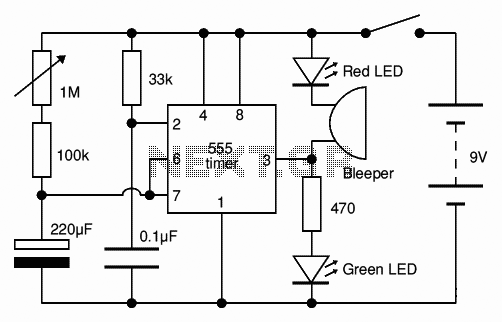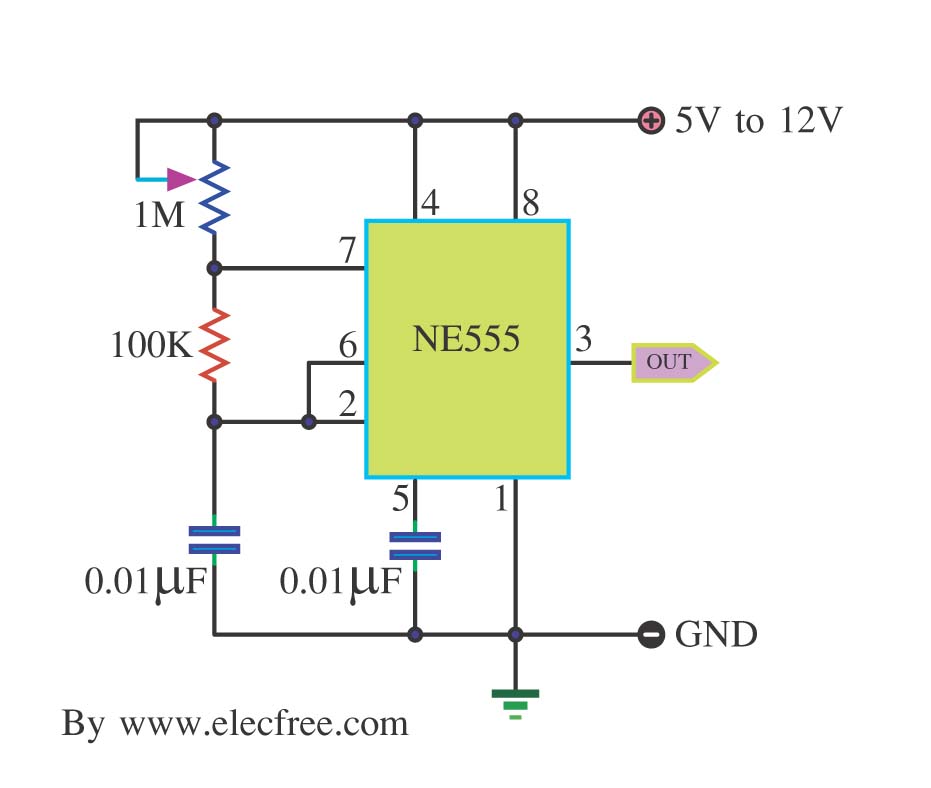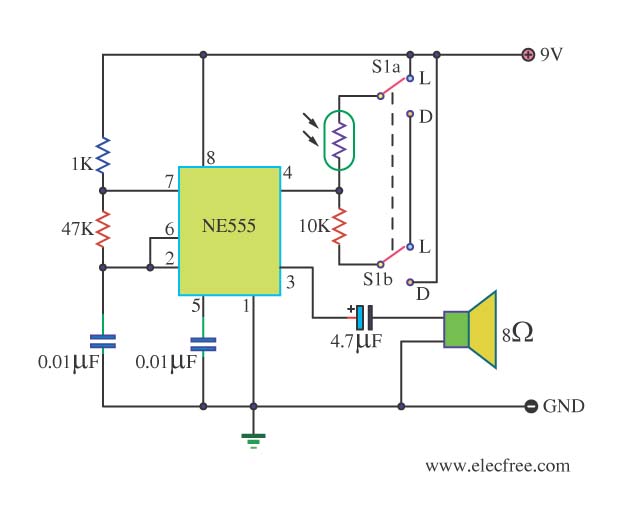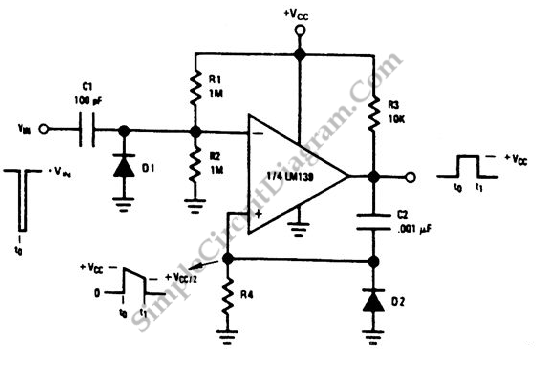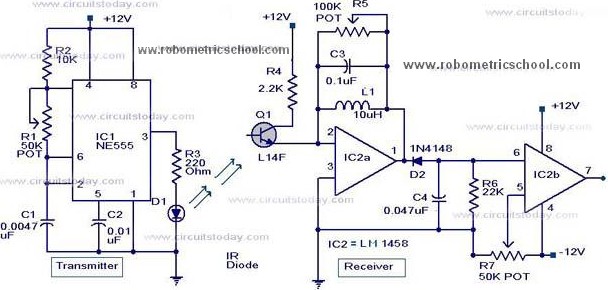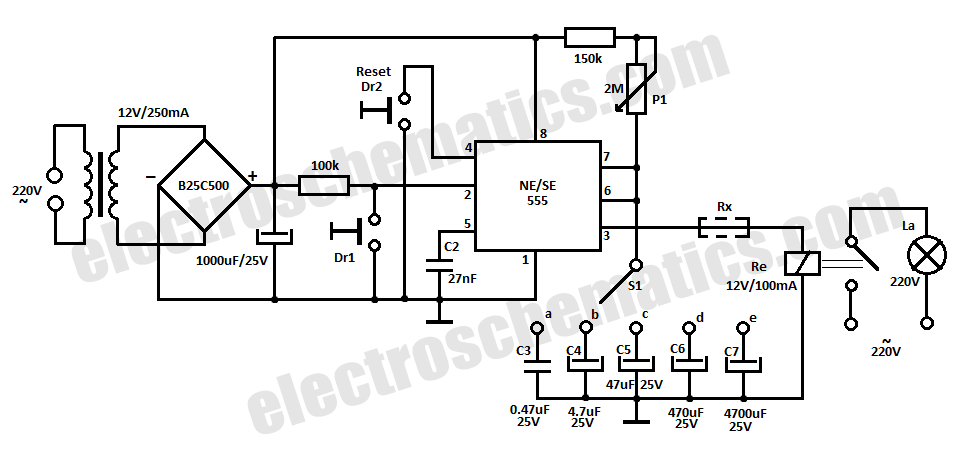
555 Timer with a Speaker
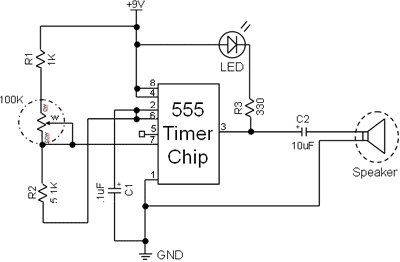
The 555 timer is a versatile component that can be utilized as a timer and configured to produce a specific frequency. In Part II of Electronic Project I, a circuit was created to make an LED flash. This time, a speaker will be added to allow the emitted frequency to be heard. The cost of the speaker can vary based on quality and personal investment; it can be purchased or salvaged from an old boombox or stereo. For instructions on inserting chips into the board, refer to Part V. Begin by making power and ground connections to the chip, using red for power and black for ground to facilitate troubleshooting. Next, add a potentiometer and LED to the board, ensuring the potentiometer pins are in different rows, as detailed in Part IV. Connect pin 2 to pin 6 using a wire of a different color (e.g., yellow). A 1 µF ceramic capacitor is then inserted, with no polarity concerns. If using a polarized capacitor, ensure the "+" side faces the chip and the "-" side connects to ground. A grey wire connects a resistor to the LED, while a small wire connects the "ccw" and "w" pins on the potentiometer. The middle pin of the potentiometer connects to pin 7 via a green wire and through a 5.1 kΩ resistor to pin 2 via a purple wire. The 1 kΩ resistor connects to the "cw" pin of the potentiometer and power. The terms "ccw," "w," and "cw" refer to counter-clockwise, wiper, and clockwise, respectively. The middle pin is always the wiper. The outer pins can be connected based on the schematic without worrying about their orientation. The final step involves adding the capacitor and speaker, ensuring the "-" side lead is connected to the speaker and grounded. After connecting power from a 9-volt battery, the LED may appear continuously lit due to rapid blinking. A sound should be audible from the speaker, with frequency changes as the potentiometer is adjusted. If issues arise, a checklist should be followed to troubleshoot potential wiring errors or component failures.
The circuit utilizing the 555 timer is designed to create an audio signal that can be modulated by adjusting the potentiometer. The 555 timer operates in astable mode, generating a continuous square wave output. The frequency of this output is determined by the values of the resistors and capacitors connected to the timer. In this setup, the potentiometer serves as a variable resistor, allowing for frequency modulation.
The power supply for the circuit is provided by a 9-volt battery, which is connected to the power and ground pins of the 555 timer. The LED serves as a visual indicator of the timer's operation, while the speaker converts the electrical signals into sound. The capacitor plays a crucial role in defining the timing intervals and frequency of the output signal.
The connections made to the potentiometer are critical for its functionality. The wiper (middle pin) adjusts the resistance in the circuit, affecting the charging and discharging times of the capacitor and thereby altering the frequency of the output signal. The use of different colored wires for connections helps in maintaining clarity and organization in the circuit layout, which is essential for troubleshooting.
In summary, this circuit effectively demonstrates the principles of frequency generation using a 555 timer, while also providing an engaging way to learn about electronic components and their interactions. Proper assembly and careful attention to detail are essential for the successful operation of the circuit.555 Timers are very fun to encounter and experiment with. They can be used as a timer and can be set to a certain frequency. In Part II of Electronic Project I, we created a circuit that would get an LED to flash. This time we are going to add a speaker so that we can hear the frequency that is being emitted. · I did not put an estimate next to t his one because it can vary depending on the quality and how much you are willing to invest in a speaker. Speakers can be bought or purloined from an old boombox or stereo that you don`t need or want. For a refresher on how to insert chips into board, see Part V. Next, make power and ground connections to the chip as shown to the right. It is typically a good habit to have red wire be exclusively power and black exclusively ground. If problems arise, you can easily pick out where power and ground is traveling. Next, add the potentiometer and LED to the board (as pictured to the left). These are the next important components in this circuit. Make sure to place the potentiometer so that the pins are in different rows; see Part IV for a refresher on how to plug potentiometers into the board.
Using a different color than red or black, connect pin 2 to pin 6 (I used yellow wire). The 1 F capacitor was inserted (as can be seen to the left). This capacitor is of ceramic type and so it doesn`t matter which lead is connected to ground or the chip. If you have a polarized capacitor, make sure that the "+" side is toward the chip or that the " " side is toward ground.
In the image to the right, I added a grey wire to a resistor and connected the other side of the resistor to the LED. Next I added a wire connecting the "ccw" and "w" pins on the potentiometer (the minuscule wire is circled in orange).
I also connected the middle pin of the potentiometer to pin 7 via a green wire and also through the 5. 1k © resistor to pin 2 via a purple wire. The 1k © is connected to the "cw" pin of the potentiometer and power. So what are "ccw", "w", and "cw" These are counter-clockwise, wiper, and clockwise respectively. How do you distinguish pins The middle pin is always the wiper. The outer pins are defined by the manufacturer and there is no set way to distinguish them other than by looking at the part description.
The outer pins can be connected in the orientation in the schematic without regard to which is the counter-clockwise pin and which is the clockwise pin. The final step before trying this out is to add the capacitor and speaker (shown below). Be sure that the "-" side lead is attached to the speaker. Make sure also that the speaker is grounded. The left image shows the pins of the speaker as it connects directly to ground. Now try plugging power from the 9 volt battery into the board. If the LED seems to stay lit instead of blinking, that is okay. What the LED is really doing (in most cases) is blinking so fast that it seems to just stay lit. You should hear a sound from the speaker. As you turn the potentiometer, it should change in frequency. Congratulations to those who accomplished this feat. If yours isn`t working right away, there is a basic checklist that you should walk through before becoming too discouraged.
Chances are it is only a minor issue. o Make certain that not only the components are wired correctly (it is easy to be just one row off), but also that they are inserted correctly. Capacitors and LEDs are likely culprits of not being inserted correctly as they are polarized. o Does something smell like it is burning Is there a black area on a component If this is the case, swap out the component and double check the value and the wiring.
Something was not wired correctly to make the component break. This concludes the Electronic Project I that uses the 555 timer to make simple circuits. Tune in in two weeks when we use operational amplifiers to make filters for music. 🔗 External reference
The circuit utilizing the 555 timer is designed to create an audio signal that can be modulated by adjusting the potentiometer. The 555 timer operates in astable mode, generating a continuous square wave output. The frequency of this output is determined by the values of the resistors and capacitors connected to the timer. In this setup, the potentiometer serves as a variable resistor, allowing for frequency modulation.
The power supply for the circuit is provided by a 9-volt battery, which is connected to the power and ground pins of the 555 timer. The LED serves as a visual indicator of the timer's operation, while the speaker converts the electrical signals into sound. The capacitor plays a crucial role in defining the timing intervals and frequency of the output signal.
The connections made to the potentiometer are critical for its functionality. The wiper (middle pin) adjusts the resistance in the circuit, affecting the charging and discharging times of the capacitor and thereby altering the frequency of the output signal. The use of different colored wires for connections helps in maintaining clarity and organization in the circuit layout, which is essential for troubleshooting.
In summary, this circuit effectively demonstrates the principles of frequency generation using a 555 timer, while also providing an engaging way to learn about electronic components and their interactions. Proper assembly and careful attention to detail are essential for the successful operation of the circuit.555 Timers are very fun to encounter and experiment with. They can be used as a timer and can be set to a certain frequency. In Part II of Electronic Project I, we created a circuit that would get an LED to flash. This time we are going to add a speaker so that we can hear the frequency that is being emitted. · I did not put an estimate next to t his one because it can vary depending on the quality and how much you are willing to invest in a speaker. Speakers can be bought or purloined from an old boombox or stereo that you don`t need or want. For a refresher on how to insert chips into board, see Part V. Next, make power and ground connections to the chip as shown to the right. It is typically a good habit to have red wire be exclusively power and black exclusively ground. If problems arise, you can easily pick out where power and ground is traveling. Next, add the potentiometer and LED to the board (as pictured to the left). These are the next important components in this circuit. Make sure to place the potentiometer so that the pins are in different rows; see Part IV for a refresher on how to plug potentiometers into the board.
Using a different color than red or black, connect pin 2 to pin 6 (I used yellow wire). The 1 F capacitor was inserted (as can be seen to the left). This capacitor is of ceramic type and so it doesn`t matter which lead is connected to ground or the chip. If you have a polarized capacitor, make sure that the "+" side is toward the chip or that the " " side is toward ground.
In the image to the right, I added a grey wire to a resistor and connected the other side of the resistor to the LED. Next I added a wire connecting the "ccw" and "w" pins on the potentiometer (the minuscule wire is circled in orange).
I also connected the middle pin of the potentiometer to pin 7 via a green wire and also through the 5. 1k © resistor to pin 2 via a purple wire. The 1k © is connected to the "cw" pin of the potentiometer and power. So what are "ccw", "w", and "cw" These are counter-clockwise, wiper, and clockwise respectively. How do you distinguish pins The middle pin is always the wiper. The outer pins are defined by the manufacturer and there is no set way to distinguish them other than by looking at the part description.
The outer pins can be connected in the orientation in the schematic without regard to which is the counter-clockwise pin and which is the clockwise pin. The final step before trying this out is to add the capacitor and speaker (shown below). Be sure that the "-" side lead is attached to the speaker. Make sure also that the speaker is grounded. The left image shows the pins of the speaker as it connects directly to ground. Now try plugging power from the 9 volt battery into the board. If the LED seems to stay lit instead of blinking, that is okay. What the LED is really doing (in most cases) is blinking so fast that it seems to just stay lit. You should hear a sound from the speaker. As you turn the potentiometer, it should change in frequency. Congratulations to those who accomplished this feat. If yours isn`t working right away, there is a basic checklist that you should walk through before becoming too discouraged.
Chances are it is only a minor issue. o Make certain that not only the components are wired correctly (it is easy to be just one row off), but also that they are inserted correctly. Capacitors and LEDs are likely culprits of not being inserted correctly as they are polarized. o Does something smell like it is burning Is there a black area on a component If this is the case, swap out the component and double check the value and the wiring.
Something was not wired correctly to make the component break. This concludes the Electronic Project I that uses the 555 timer to make simple circuits. Tune in in two weeks when we use operational amplifiers to make filters for music. 🔗 External reference
